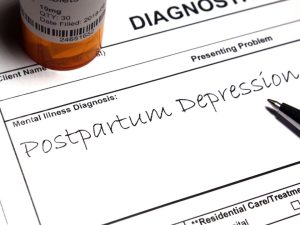PPD Nursing Recognizing PPD in Moms
Introduction of postpartum depression in the prenatal period can help initiate discussions and education on awareness of the topic.
Discussions can lead to the establishment of a baseline. A baseline can gather tons of insightful information including past medical history, family history, and prenatal thoughts of the pregnancy and the unborn newborn.
Thorough education during the hospital stay is critical to continue to build upon screenings and recognition of postpartum depression.
All patients regardless of history, prenatal screening, or current emotional state should receive education on signs and symptoms to monitor upon discharge.
The education provided should also be discussed with the birth partner and family members within the new mom’s close support group. Patient support members will typically recognize these symptoms and frequency more accurately and quicker than the patient will.
The support member’s acknowledgment and encouragement for the new mom to reach out to their health care provider is crucial in obtaining efficient treatment. New moms may feel ashamed to feel this way and reaching out sometimes is difficult, so their support group is key.
Additional postpartum depression screenings should be done at the clinic postpartum visit, which creates continued assessment and follow-up care. Further monitoring by the newborn provider at the newborn appointments can create extra checkpoints.
Properly identifying postpartum patients when entering the ER produces additional spot-checks.
When possible, having continuation of care throughout the prenatal, intrapartum, and postpartum periods, can build and reinforce recognition and allow for prompt treatment.









